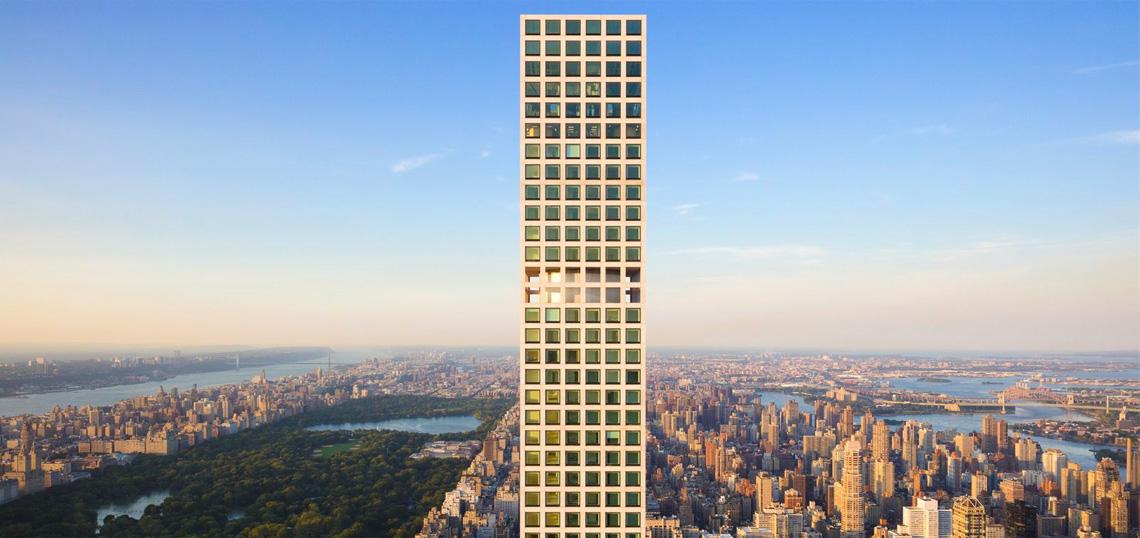432 Park’s design problems reveal themselves to its billionaire and millionaire buyers: “The claims include: millions of dollars of water damage from plumbing and mechanical issues; frequent elevator malfunctions; and walls that creak like the galley of a ship — all of which may be connected to the building’s main selling point: its immense height...” (New York Times)
The historic Village Cigars building is for sale: "The owners of the iconic Village Cigars building in the West Village are planning to sell the vintage property that includes the famous Hess Triangle once considered the smallest piece of private land in Manhattan." (REW)
New Yorkers who have fled the city are scooping up commercial properties in the Hudson Valley: “A small but growing number are putting down roots in towns that many would have considered only as weekend getaways before the pandemic. These transplants are opening shops, renting offices and transforming aging inns into chic hotels, eager to recreate their old businesses or try new ones. (WSJ)
New entrances open at Prospect Park: “The entrances are part of a $40 million series of park improvement projects citywide. On January 27, 2021, the Parks Department cut the ribbon on two new completed entrances to Prospect Park along Flatbush Avenue in Brooklyn. The new entrances are the first additional entrances added to Prospect Park since the 1940’s.” (CityLand)
Owners of rent-stabilized propose a homeless housing plan to help bridge gaps: “The Community Housing Improvement Program (CHIP), a group that represents the owners of over 400,000 rent-stabilized apartments, said nearly 12 percent of their units are sitting empty as the coronavirus continues to upend the city’s housing sector. Now they are asking the city to fill those empty apartments with homeless individuals and families and to pay their rent with a special voucher program, similar to how it helps struggling New Yorkers with Section 8 and other rental assistance programs.” (REW)
Urban renewal is starting to stretch beyond Newark’s downtown with new plans in motion for the city’s further flung neighborhoods: “The city is hoping to soon rewrite that history. Dozens of abandoned lots are expected to be among the first parcels sold through the Newark Land Bank, the only initiative of its kind in New Jersey, modeled on similar programs in Chicago, Detroit and Philadelphia. Unlike the Valentine’s Day homesteading initiative, land bank buyers can access free legal and technical expertise, and city residents will be prioritized. Homeowners will also be able to buy small abandoned “side lots” adjacent to their houses at nominal rates. Rarely attractive to developers, the lots, once reclaimed, will eliminate eyesores while adding value to homes, said Bernel Hall, chief executive of the city’s development arm, Invest Newark.” (New York Times)
Abolitionist House in Downtown Brooklyn is now a landmark: “The city’s Landmarks Preservation Commission voted unanimously on Tuesday to grant landmark status to the Downtown Brooklyn house where prominent abolitionists Harriet and Thomas Truesdell lived during the 19th century — marking a long-awaited victory for local history buffs and activists alike.” (Brooklyn Paper)
One of Long Island City’s most transformative developments sees a major decline in tenants: “Jackson Park, one of Tishman Speyer’s prized apartment buildings, has lost nearly 40% of its tenants, according to data from analytics firm Trepp. The 1,871-unit luxury development in Long Island City, which had been gaining popularity with renters for years, saw occupancy fall from 96% in 2019 to 59% by September of last year.” (Crain's)
Does the Trump brand have South American appeal?: "In South America, they’re resurrecting a project left for dead: a Trump tower in Punta del Este, the Uruguay resort city known as a playground for the region’s elite and U.S. celebrities such as Facebook’s Mark Zuckerberg and designer Ralph Lauren." (Crain's)






